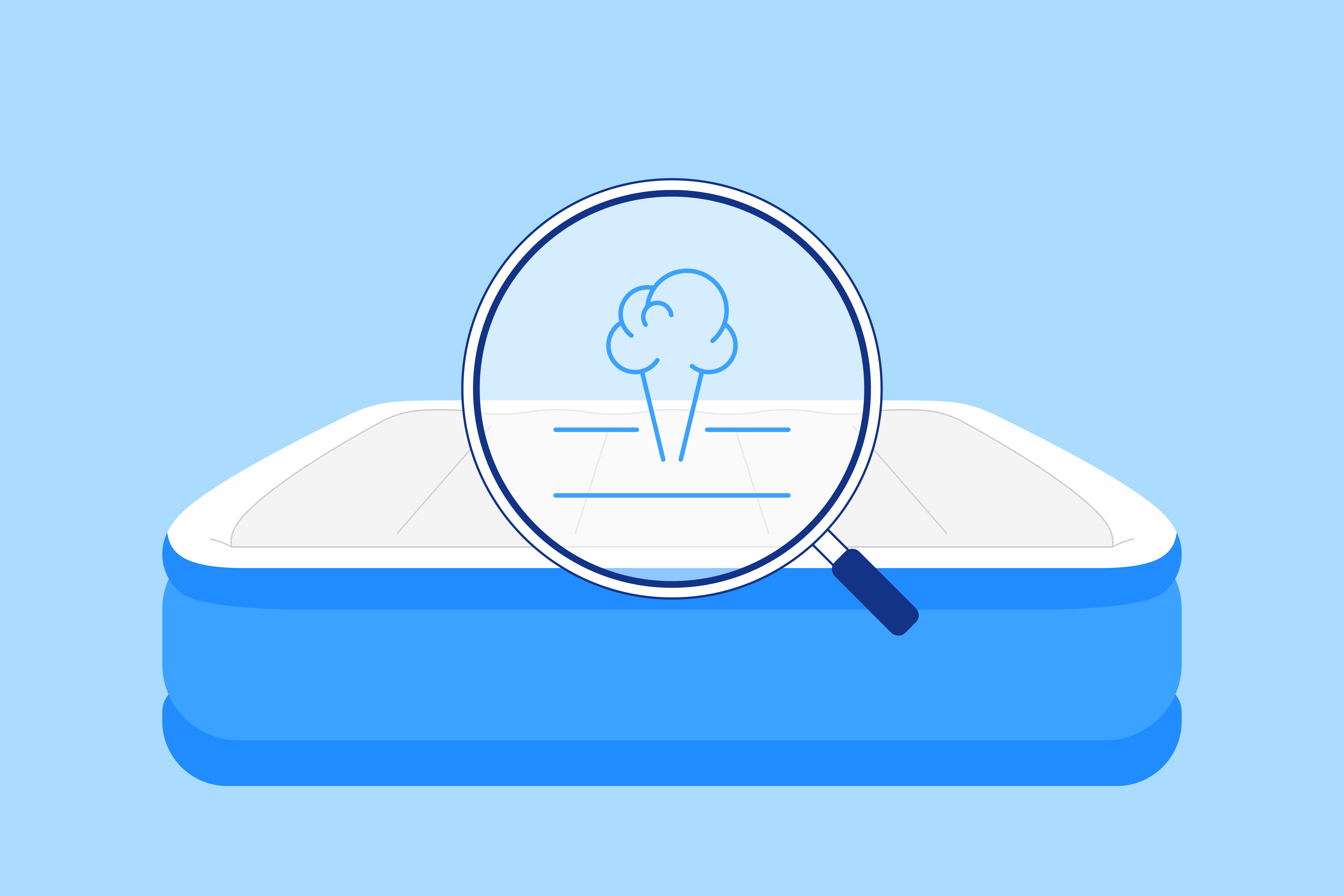Key Takeaways
- Causes of Moisture Accumulation: Understanding and addressing the causes of mattress moisture, such as inadequate air circulation, high humidity, water seepage, and mold growth, is crucial to prevent issues like unpleasant odors, stains, bacteria growth, and allergic reactions.
- Preventive Measures: Implement practical solutions to maintain a dry and comfortable mattress. This includes ensuring sufficient air circulation through bed frames with slats, using breathable fabrics for sheets and protectors, addressing humidity with air conditioners or dehumidifiers, and promptly fixing water seepage or leaks.
- Importance of Maintenance: Regular mattress maintenance, including cleaning, ventilation, and the use of protective measures like mattress protectors, is essential to prevent mold growth, dust mites, and other issues that can compromise the mattress’s integrity and impact sleep quality.
Have you ever woken up to find your mattress damp underneath? This can be a frustrating and uncomfortable experience that can ruin your quality of sleep. The accumulation of moisture in your mattress can promote the growth of mold and even trigger allergic reactions.
We will explore the common causes of mattress moisture to help you understand why your mattress may be wet underneath. With practical solutions and maintenance, you can ensure a dry and comfortable sleep.
Moisture accumulation can cause various issues, including unpleasant odors, stains, and bacteria growth. Therefore, it is essential to understand the causes of dampness to prevent long-term damage to your mattress. Let’s dive into the potential reasons for a wet mattress underneath, such as lack of air circulation, humid environments, water seepage, and mold growth.
By addressing these causes and implementing practical solutions, you can enjoy a restful night’s sleep on a dry and comfortable mattress.
Lack of Sufficient Air Circulation
Your mattress needs enough air circulation to stay dry. Sometimes, the mattress may be placed against a wall or you might keep a mattress directly on the floor. Both restrict air movement and can cause dampness underneath.
To increase air circulation, consider purchasing a bed frame with slats or an impermeable bed base that allows for enough air flow.
Inadequate air circulation may also result from using sheets or mattress protectors that don’t breathe correctly. So, look for breathable fabrics like cotton, linen, and bamboo that allow for air flow to keep the mattress dry and fresh.
A foam mattress tends to draw in more moisture compared to regular ones. To stop moisture from building up under the mattress, you can improve air circulation in the room and use a dehumidifier. Increasing air circulation and having a dehumidifier will help keep your foam mattress dry and comfy.
Having moisture under your mattress is an issue since it can cause mold to grow, and we all know mold is not good. Mold releases allergens that can lead to serious health issues. Plus, dust mites really like warm, humid spots, and they’ll multiply if your mattress is damp. Removing mold from a mattress is tough, so it’s much better to prevent it to avoid serious health problems.
If you find wetness near the window frame, you probably found the main cause. Another possibility is a leaking roof. Now that you know where to check, you can take action if you see any wetness on the wall that goes all the way up to the top.
A damp mattress underneath can create an unhealthy sleeping environment, so it’s essential to maintain sufficient air circulation. By choosing the right bed base and sheets and encouraging air movement to the mattress, you can achieve a dry and comfortable sleeping surface.
High Humidity and Moisture in the Air
Living in a humid environment or facing high humidity in your bedroom can lead to moisture buildup on your mattress. This occurs when water vapor in the air increases and condenses on colder surfaces, such as your mattress, particularly during the summer months.
To address this, ensure your bedroom has sufficient ventilation. On hot and humid days, use an air conditioner or fan to circulate the air and lower humidity. If the issue persists, consider getting a dehumidifier. An air purifier can also enhance air quality and diminish moisture in the air.
Letting your mattress receive direct sunlight, keeping windows open, and practicing regular mattress maintenance, including removing mold, are effective strategies to prevent a moldy mattress and reduce condensation. These steps provide the best solution to maintain a dry and comfortable sleeping environment.
Water Seepage or Leaks
Water seepage or leaks can result in a wet, water-damaged mattress underneath. It may be caused by leaking windows, doors, or even a shared wall with a bathroom that leaks. If you suspect water seepage or leaks, you should address the issue promptly to prevent further damage and mold growth.
Start by checking all the windows of your house and, most importantly, the ones in your bedroom. Make sure there are no gaps around the window frames and that they remain tightly closed during rainfall. If you have a window air conditioner, check the unit and the surrounding window area for leaks.
You should also examine the walls around your bed and, in particular, the shared walls between your bedroom and other areas of your home. If you notice any staining or bubbling on the surface, it may be a sign of water damage.
If you discover that your mattress has been compromised by water seepage or leaks, dry it out immediately with a dry cloth or towel. Then, ventilate the room by opening windows or using a fan to promote airflow.
Meanwhile, maintain enough ventilation and check your entire home for potential sources of water damage to safeguard against a wet mattress. Especially for :
- Memory foam mattresses
- Air mattresses
- Waterbeds
- All-foam mattresses
Their structure may enable water accumulation and lead to more condensation.
To prevent further water damage or mold growth for these types of mattresses, it may be necessary to hire a professional to repair any leaks. In the meantime, use a waterproof mattress protector to prevent future moisture accumulation.
Mold Growth and Dust Mites
If you live in a humid environment or your bedroom lacks sufficient air ventilation, you may be likely to encounter moisture accumulation, which can cause mold growth and dust mites on your mattress. If you notice any signs of mold on your mattress or a musty smell, it’s crucial to take quick action to avoid the adverse effects of these organisms.
To start, you could remove any mold using a solution of white vinegar and water, an alcohol solution, or a specially formulated cleaning product. Be sure to cover the entire surface and allow it to air dry completely before using the mattress again.
Additionally, using an absorbent sheet or a waterproof mattress protector can help prevent further mold growth or dust mite infestation.
If your bedroom environment encourages mold growth and dust mites, it’s advisable to install an air purifier or dehumidifier to keep the air clean and dry.
Maintaining a clean and dry sleeping surface is essential for preventing the growth of mold in the bedroom and the accumulation of dust mites that can seriously affect your health.
FAQs
What can I put under my mattress to prevent moisture?
Consider using a breathable mattress protector or moisture-resistant barrier to prevent moisture buildup under your mattress. These can be made of materials like waterproof fabric or have an impervious layer, creating a barrier between the mattress and any potential moisture. Elevating the mattress with bed risers or using a breathable bed foundation can enhance air circulation, reducing the risk of dampness.
How do I know if my mattress is damp?
Signs of a damp mattress may include a musty odor, mold or mildew, and dampness when you touch the mattress surface. Check for any visible signs of discoloration, especially around the edges or underside. If you suspect lingering moisture, it’s essential to investigate and address the issue promptly to prevent further damage to your mattress.
How do I protect my mattress from dampness?
To protect your mattress from dampness, use a moisture-resistant mattress protector. Ensure proper ventilation in the bedroom by allowing air to circulate around the mattress. Avoid placing the mattress directly on the floor, which can trap moisture. Regularly clean and vacuum the bedroom to minimize dust and allergens contributing to damp conditions.
How do you dry a wet mattress from sweating?
If your mattress is wet from sweating, start by removing all bedding and allowing the mattress to air dry in a well-ventilated room. Use fans or open windows to enhance air circulation. If possible, move the mattress to a sunny area to expedite drying. Then, use moisture-absorbing products like silica gel packets or baking soda to absorb excess moisture.
To prevent future issues, it’s crucial to address the underlying cause of sweating, such as improving room ventilation or using moisture-wicking bedding.
Is it normal for a new mattress to have moisture?
While it’s not typical for a new mattress to have moisture, condensation can form during transportation or storage. Upon receiving a new mattress, inspect it for any signs of dampness or odors. Allow the mattress to air out in a well-ventilated space before placing bedding on it.
If you notice persistent moisture, contact the manufacturer or retailer to address the issue, as excess moisture can lead to mold and affect the mattress’s integrity.
Why is it bad for a memory foam mattress to get wet?
A memory foam mattress getting wet is problematic as it can lead to mold growth, material deterioration, unpleasant odors, and may void the mattress warranty. Moisture compromises the structural integrity, hygiene, and overall lifespan of the mattress. It is essential to keep a memory foam mattress dry for optimal performance and longevity.
Conclusion
It’s crucial to know why your mattress might get wet underneath to keep your sleeping space healthy and cozy. Whether you’re dealing with high humidity, fixing water damage, or just taking good care of your mattress, these solutions are here to make sure your mattress stays dry and strong. Preventative measures are important as well, so make sure to use a waterproof mattress protector and take advantage of the benefits of an air purifier.
By following these easy steps, you’re not just protecting your mattress but also making sure you get the best sleep possible, free from any discomfort caused by dampness. Always remember, if you’re still having problems with wetness or mold, it’s a good idea to get help from a professional.
Taking these steps to fix the reasons behind your wet mattress is like investing in both your mattress’s life and the quality of your sleep. Now armed with this knowledge, you can create a sleep haven that’s dry and comfy, ensuring you enjoy peaceful and refreshing nights.
About the author
April Mayer is a sleep expert and writer with a degree in exercise physiology. She has dedicated her career to exploring the relationship between sleep and productivity. Her insightful articles, such as "The Surprising Way Your Mood Might Be Messing With Your Productivity" and "Wake Up to More Productive Mornings," have been featured in reputable publications like Forbes, Greatist, Real Homes, Thrillist, Tom's Guide, and Eat This, Not That. With a passion for helping others lead more productive lives through restful sleep, April offers valuable expertise on foods and vitamins for better sleep. As a trusted member of the Early Bird team since March 2020, she continues to provide informative and well-researched content.
View all posts





